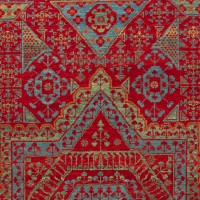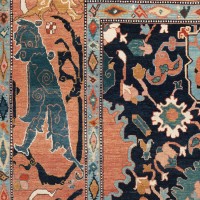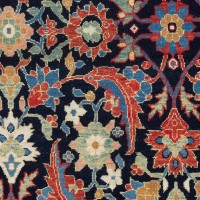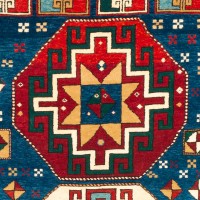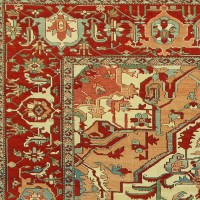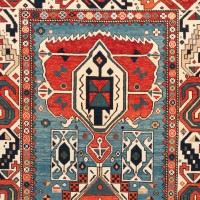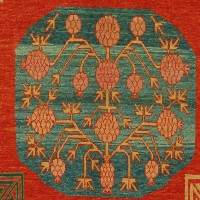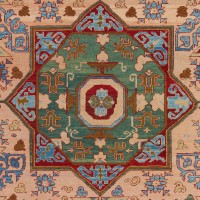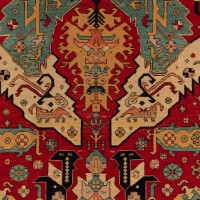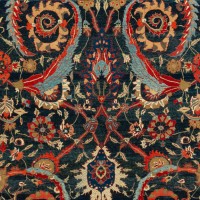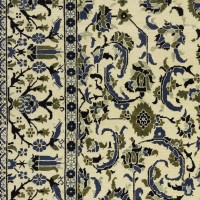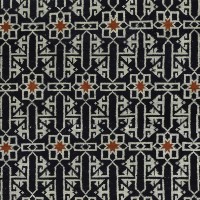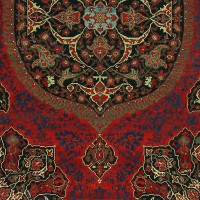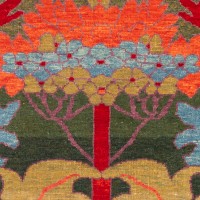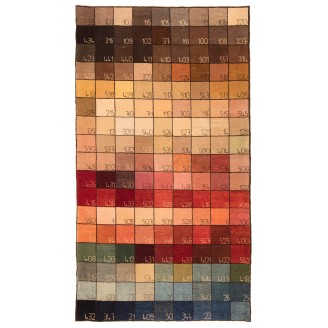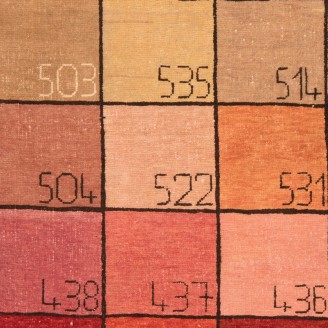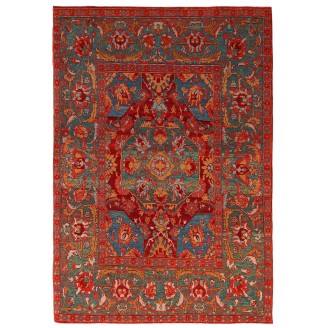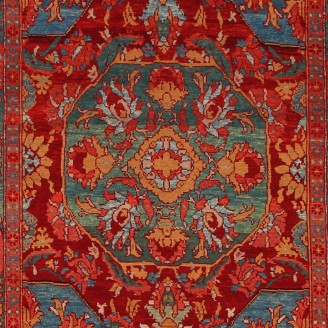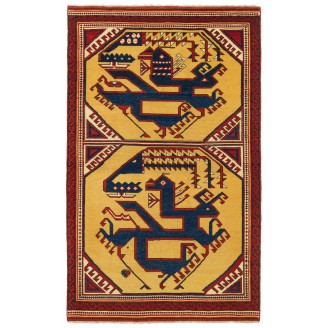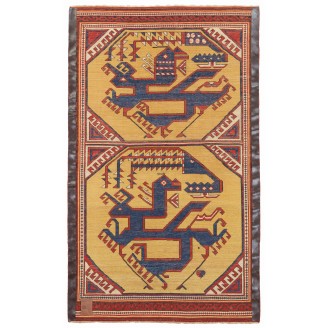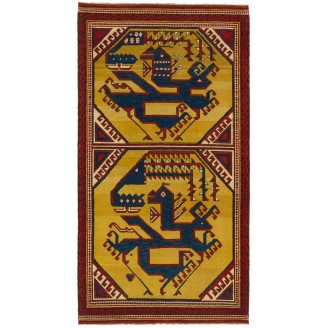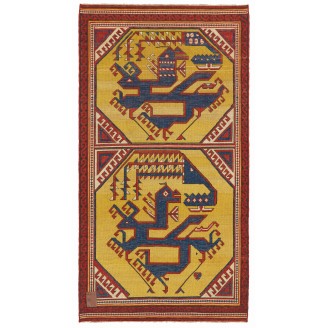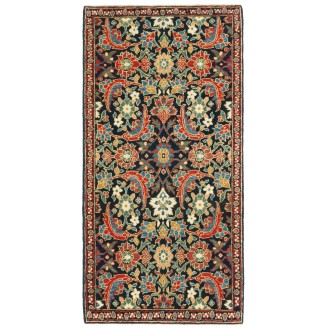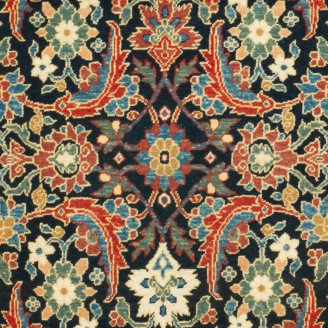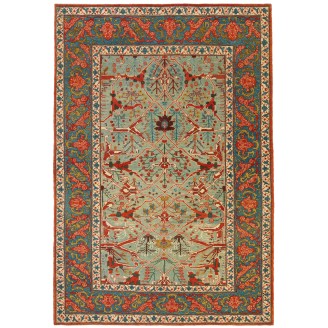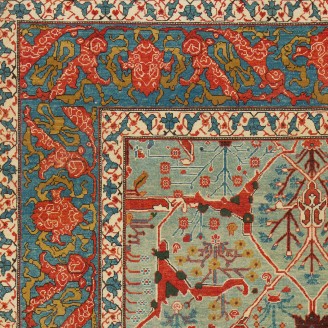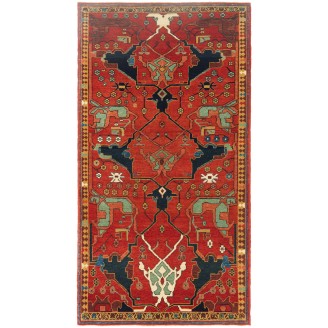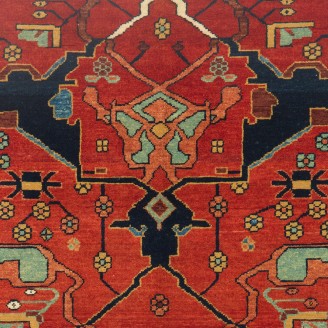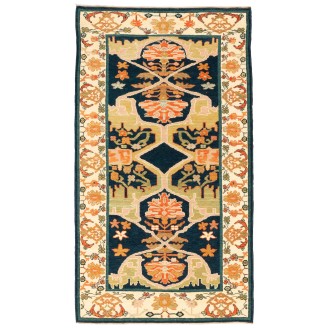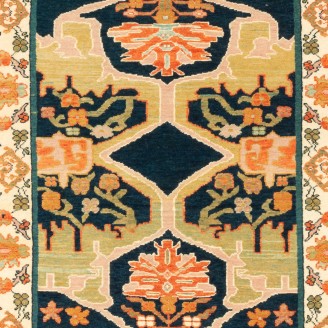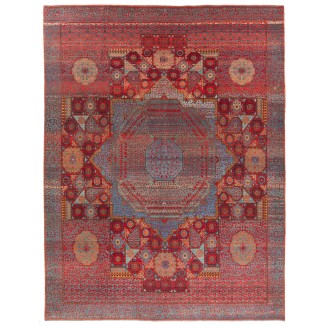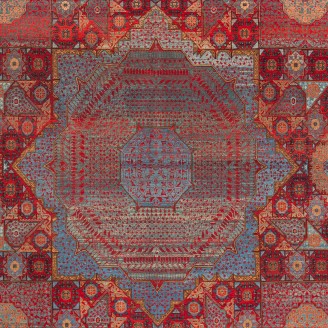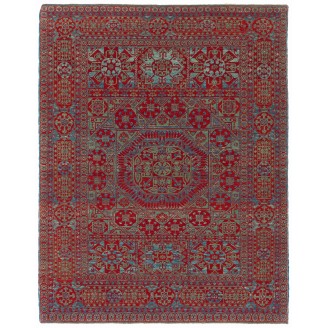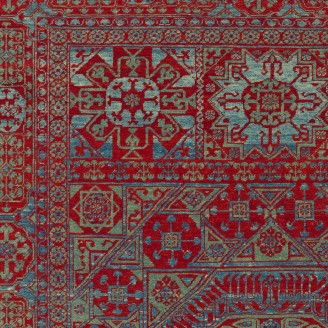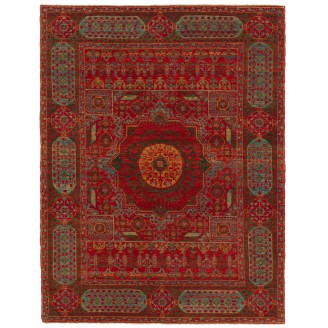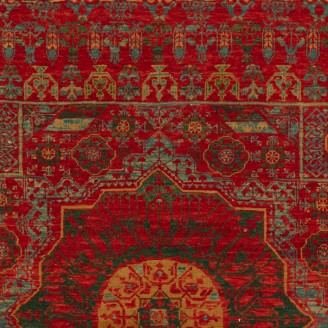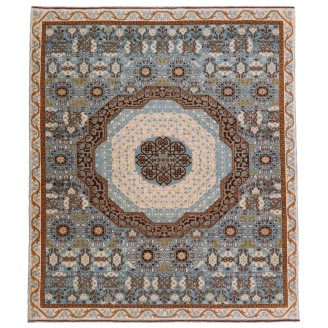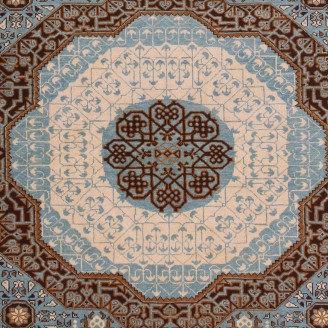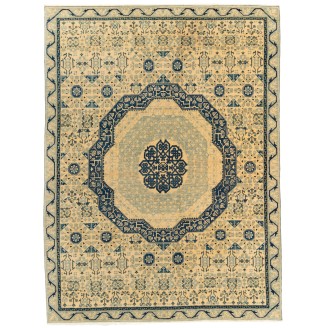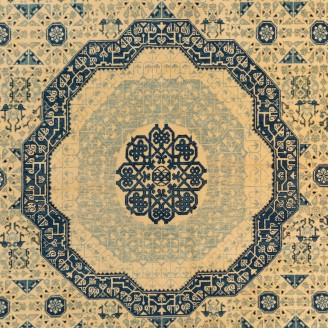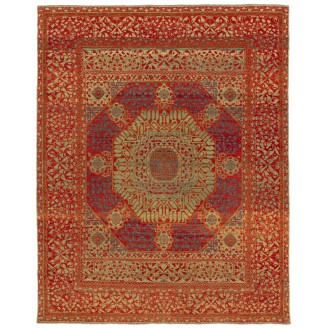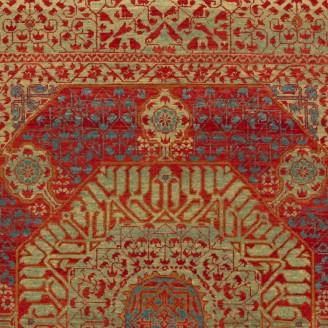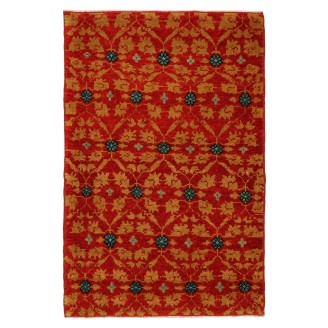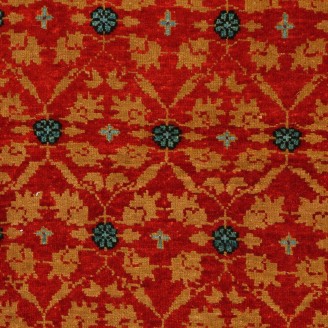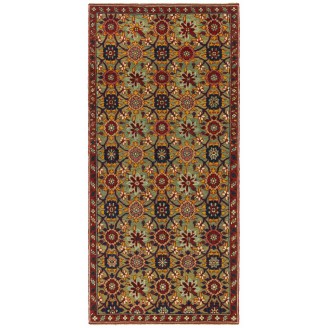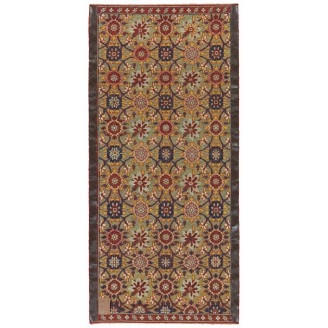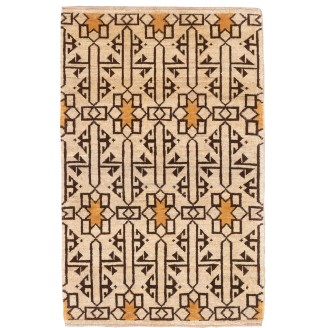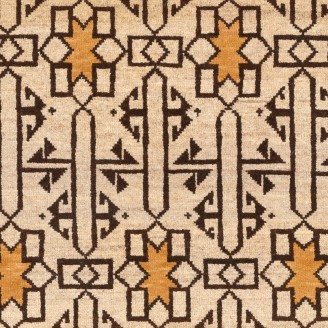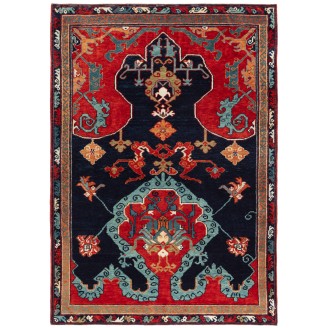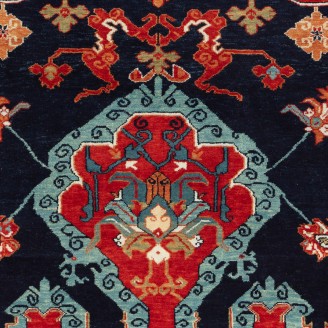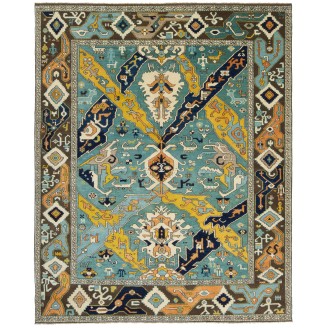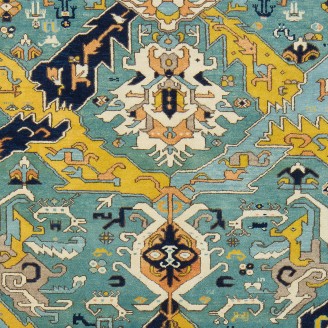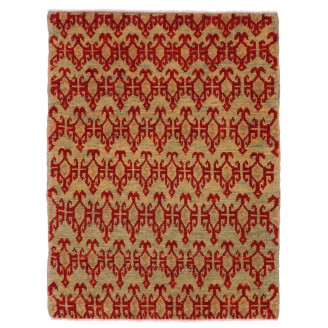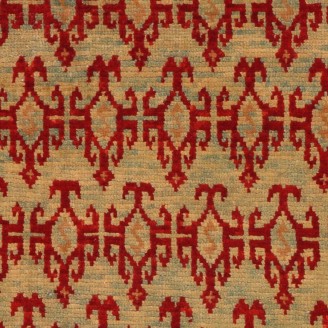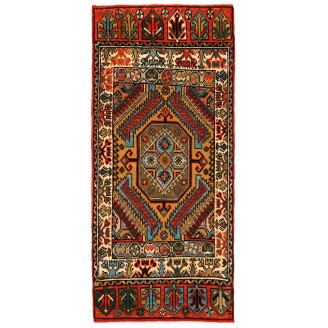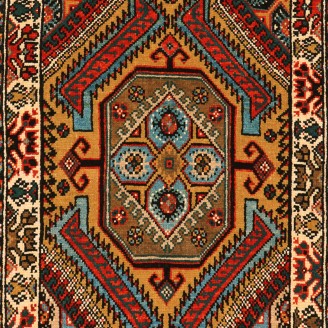Model: ARTK0020
Dimensions: 4'6" X 8'0"(138cm x 245cm)
Price:
$7,000
Ex Tax:$7,000
Model: ART00088
Dimensions: 3'11" X 5'7"(120cm x 172cm)
Turkish Court Manufactury Rugs were woven in the Egyptian workshops founded by Ottoman Empire in the 16th century. Those carpets were woven in Egypt, following the paper cartoons probably created in Istanbul and sent to Cairo at that time.The source of carpet comes from the book Antique Rugs from th..
Price:
$4,800
Ex Tax:$4,800
Model: ART00714
Dimensions: 5'3" X 3'3"(162cm x 101cm)
This 15th-century carpet in the Museum of Islamic Art - Berlin, showing the battle of the dragon and the phoenix, is one of the most crucial animal carpets of the early Ottoman period that have become known to the present day. Two highly stylized animals, a dragon, and a phoenix, fight against a yel..
Price:
$0
Ex Tax:$0
Model: ART00713
Dimensions: 6'2" X 3'4"(188cm x 103cm)
Color summary: 5 colors of total; Khaki 413 (Dyers’s Weed) Imperial Red 415 (Madder Root) Dark Brawn 316 (No Dye - Sheep’s own Color) Gunmetal Blue 409 (Indigo) Natural Wool Color 320 (Specially Washed) for more information about our colors..
Price:
$0
Ex Tax:$0
Model: ART00276
Dimensions: 2'7" X 5'1"(80cm x 156cm)
The source of the rug comes from the book Antique Rugs of Kurdistan A Historical Legacy of Woven Art, James D. Burns, 2002 nr.31. This blue background rug has a variation of masi awita (fish around the lotus) pattern from Senna, Eastern Kurdistan area late 19th century. The field design on this rug ..
Price:
$2,300
Ex Tax:$2,300
Model: ART00446
Dimensions: 6'7" X 9'6"(202cm x 291cm)
The source of the rug comes from the book Islamic Carpets, Joseph V. McMullan, Near Eastern Art Research Center Inc., New York 1965 nr.22. This is a system of arabesque-designed 19th-century rugs from Gerous ( Garrus or Garus ) region, Eastern Kurdistan area. This rug is a splendid echo of the Arabe..
Price:
$12,500
Ex Tax:$12,500
Model: ART00584
Dimensions: 3'3" X 6'0"(100cm x 183cm)
The source of the rug comes from the book Islamic Carpets, Joseph V. McMullan, Near Eastern Art Research Center Inc., New York 1965 nr.22. This is a system of arabesque-designed 19th-century rugs from Gerous ( Garrus or Garus ) region, Eastern Kurdistan area. This rug is a splendid echo of the ..
Price:
$3,180
Ex Tax:$3,180
Model: ART00278
Dimensions: 2'11" X 5'2"(89cm x 159cm)
The most dramatic of the Gerous ( Garrus, Gerus, Garus ) carpets are those with an "asymmetric" design. Only a section of the original is shown, in the same way, many Lotto carpets were woven. It is difficult to guess the size of these carpets from a photo, but here we enter the area of the "Wagireh..
Price:
$2,600
Ex Tax:$2,600
Model: ART00035
Dimensions: 8'11" X 11'7"(274cm x 355cm)
The source of the rug comes from the book Völker, Angela, Die orientalischen Knüpfteppiche das MAK, Vienna: Böhlau, 2001: 42–5. This rug with the central star was designed in the early 16th-century rug by Mamluk Sultane of Cairo, Egypt. It is exhibited at MAK – Museum of Applied Arts, Vienna Austria..
Price:
$29,000
Ex Tax:$29,000
Model: ART00698
Dimensions: 5'11" X 4'7"(182cm x 142cm)
This rug with the central star was designed in the early 16th-century rug by Mamluk Sultane of Cairo, Egypt. Attempting to read early carpets produced in workshops in Cairo provides an entirely different set of challenges. Cairene carpets, distinguished by their limited color palette, symmetrical kn..
Price:
$5,120
Ex Tax:$5,120
Model: ART00573
Dimensions: 5'1" X 6'5"(155cm x 197cm)
The source of the rug comes from the book Renaissance of Islam, Art of the Mamluks, Esin Atil, Smithsonian Institution Press, Washington D.C., 1981 nr.127. This rug with the central star was designed in the early 16th-century rug by Mamluk Sultane of Cairo, Egypt. It is exhibited at the Washington D..
Price:
$6,200
Ex Tax:$6,200
Model: ART00286
Dimensions: 5'0" X 5'8"(153cm x 175cm)
The design source of the rug comes from The C. L. David Collection, Copenhagen. This rug with the Cusped Medallion was designed in the early 16th-century rug by Mamluk Sultane of Cairo, Egypt. Once in the Hirth Collection, and later with Ulrich Schürmann in 1965, this piece now belongs to the David ..
Price:
$4,600
Ex Tax:$4,600
Model: ART00339
Dimensions: 5'0" X 6'7"(153cm x 201cm)
The design source of the rug comes from The C. L. David Collection, Copenhagen. This rug with the Cusped Medallion was designed in the early 16th-century rug by Mamluk Sultane of Cairo, Egypt. Once in the Hirth Collection, and later with Ulrich Schürmann in 1965, this piece now belongs to the David ..
Price:
$5,300
Ex Tax:$5,300
Model: ART00564
Dimensions: 5'2" X 6'5"(158cm x 197cm)
The design source of the rug comes from the book Renaissance of Islam, Art of the Mamluks, Esin Atil, Smithsonian Institution Press, Washington D.C., 1981 nr.128. This rug with a large central octagon was designed in the early 16th-century rug by Mamluk Sultane of Cairo, Egypt. It is exhibited at th..
Price:
$6,500
Ex Tax:$6,500
Model: ART00152
Dimensions: 1'8" X 2'6"(51cm x 78cm)
The source of carpet comes from the book Völker, Angela, Die orientalischen Knüpfteppiche das MAK, Vienna: Böhlau, 2001: 42–5. This rug with the central star was designed in the early 16th-century rug by Mamluk Sultane of Cairo, Egypt. It is exhibited at MAK – Museum of Applied Arts, Vienna Austria...
Price:
$825
Ex Tax:$825
Model: ART00615
Dimensions: 5'7" X 2'8"(171cm x 82cm)
The source of the rug comes from the book Antique Rugs of Kurdistan A Historical Legacy of Woven Art, James D. Burns, 2002 nr.2. This was an exclusive example of a Mina Khani lattice design mid-19th century rug from Koliya'i, Southern Kurdistan area. The mina khani is composed of a se..
Price:
$2,800
Ex Tax:$2,800
Model: ART00258
Dimensions: 1'8" X 2'8"(53cm x 82cm)
The source of carpet comes from the book Orient Stars Collection, Anatolian Tribal Rugs 1050-1750, Michael Franses, Hali Publications Ltd, 2021 fig.23. This 13th-century carpet is from probably the Konya region, central Anatolia, circa 1200-1300 (C 1290-1420). It is exhibited at the Museum of Turkis..
Price:
$825
Ex Tax:$825
Model: ART00248
Dimensions: 4'3" X 6'0"(131cm x 185cm)
The source of the rug comes from the book Orient Stars Collection, Anatolian Tribal Rugs 1050-1750, Michael Franses, Hali Publications Ltd, 2021 fig.189 and Antique Rugs from the Near East, Wilhelm von Bode and Ernst Kühnel, Klinkhardt & Biermann, Berlin 1958, pg.49 and Oriental Rugs, Volume 4 T..
Price:
$3,700
Ex Tax:$3,700
Model: ART00370
Dimensions: 6'8" X 8'1"(204cm x 247cm)
The source of the carpet comes from the book Hali Magazine 1993 Issue 67, pg.93 and Hali Magazine 1992 Issue 61, pg.61. Peter Bausback, Mannheim, described it on the occasion of his exhibition at the Textura 1992 in Maastricht (see also HALI, Issue 67, 1993) as follows: 'In my opinion, this is an ex..
Price:
$9,150
Ex Tax:$9,150
Model: ART00261
Dimensions: 2'0" X 2'7"(61cm x 79cm)
The source of carpet comes from the book Orient Stars Collection, Anatolian Tribal Rugs 1050-1750, Michael Franses, Hali Publications Ltd, 2021 fig.27. This 13th-century carpet is from probably the Konya region, central Anatolia, circa 1200-1300 (C 1290-1420). It is exhibited at the Museum of Turkis..
Price:
$825
Ex Tax:$825
Model: ART00073
Dimensions: 1'8" X 3'8"(52cm x 114cm)
This small piece exhibits a forceful design on a small scale in a small area. These kinds of small Turkish yastiks or mats are found which contain an extraordinary amount of power within a very small space. A large octagon medallion in the center is so large that it almost touches the edge of the fi..
Price:
$825
Ex Tax:$825
